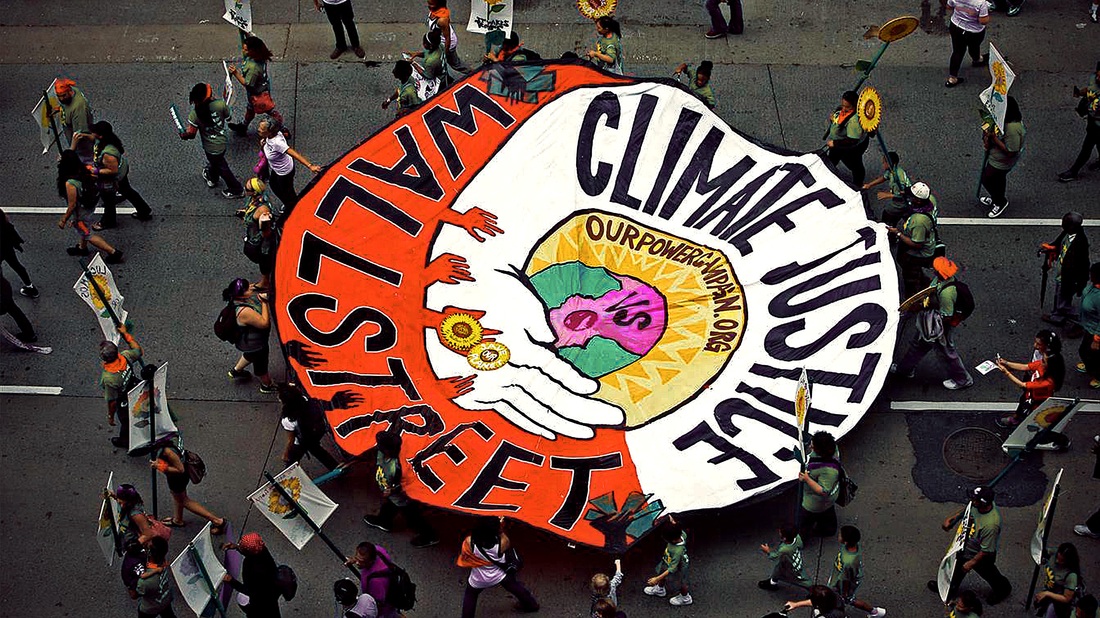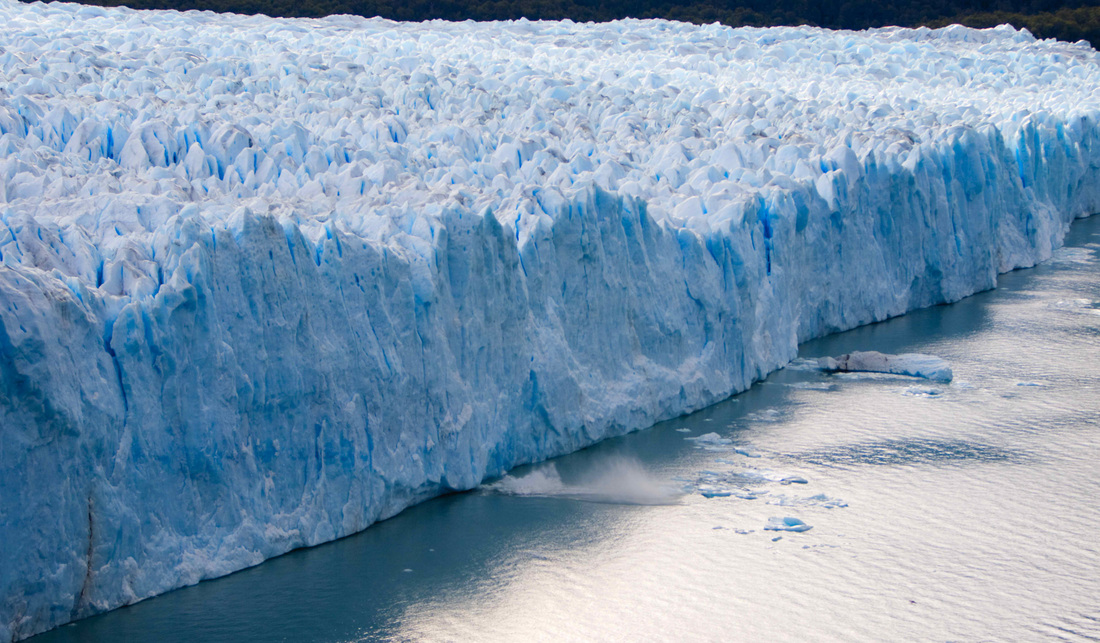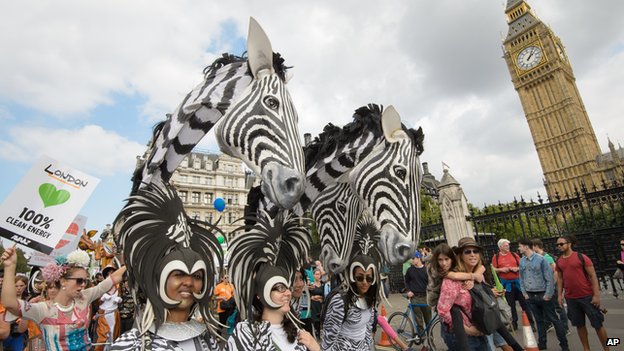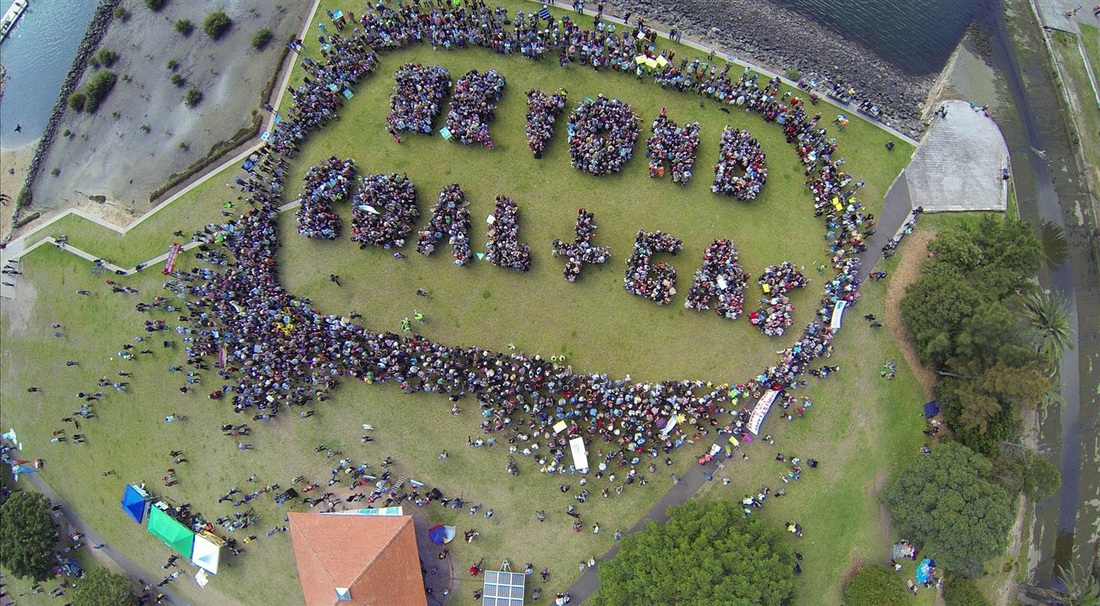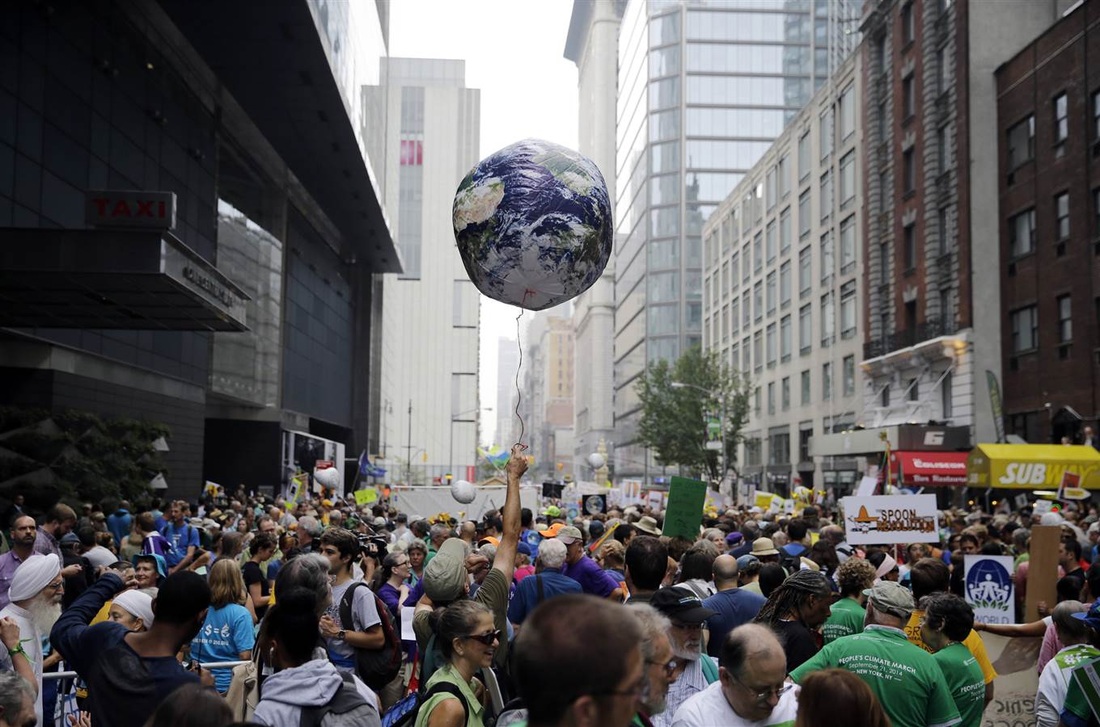The growing understanding of the effects of climate change is quite low in the developing countries which happens to be the most vulnerable to the rapidly changing climate. Devastating weather events and phenomena like severe typhoons have brought large scale damages to agriculture, infrastructure and life especially in the urban areas because of the growing population that are moving from the rural areas.
Climate change and global warming is not a yesterday’s issue, it is an issue concerning for the next generation’s sustainability and ability to support life and adapt to our changing world. A world equipped with modern technology and knowledge yet the action for saving our environment is quite slower and unprioritized.
Amidst the efforts of different environmental sectors and group, the numbers of laws and policies in both disaster risk management and climate change adaptation and mitigation which are institutionally integrated and a requirement in the existing plans and policies, still the management approach and bureaucratic treatment of the government officials hampers the efforts of its implementation.
Government officials who focuses on their political life and allies, multi-billion dollar companies that produces solid waste products and an ordinary well-being that has no concern for the environment are likely a ‘star-studded’ cast in the making of the world’s greatest man-made catastrophe.
Climate change and global warming is not a yesterday’s issue, it is an issue concerning for the next generation’s sustainability and ability to support life and adapt to our changing world. A world equipped with modern technology and knowledge yet the action for saving our environment is quite slower and unprioritized.
Amidst the efforts of different environmental sectors and group, the numbers of laws and policies in both disaster risk management and climate change adaptation and mitigation which are institutionally integrated and a requirement in the existing plans and policies, still the management approach and bureaucratic treatment of the government officials hampers the efforts of its implementation.
Government officials who focuses on their political life and allies, multi-billion dollar companies that produces solid waste products and an ordinary well-being that has no concern for the environment are likely a ‘star-studded’ cast in the making of the world’s greatest man-made catastrophe.

The Science of Climate Change
In the 1820’s, the French physicist and mathematician Joseph Fourier hypothesized that, for the Earth to have the warm climate that it does, it must retain some of the sun’s light rays as heat, what later became known as the “greenhouse effect.”
The equation and data available at the time were too limited to allow for accurate calculations, but the sun to be as warm as it is without some intermediary force. In 1859, Royal Society scientist John Tyndall tested the radioactive properties of gases and found water vapor and carbon dioxide were strong absorber of thermal radiation (heat). These are known today as the greenhouse gases such as methane, nitrous oxide, ozone and aerosols which are transparent to the sun’s light rays but trap some of the thermal radiation emitted back from earth, thereby warming the planet.
Industrialization and new technology paved way for the developments in ways of measuring and recording the temperature. Government services began recording temperature measurements systematically since the 19th century and by the 1930’s there were millions of temperature records for stations around the world.
Combining through the data led to the observation that temperature had generally increased since the late 19th century and a 1934 U.S. Weather Bureau study verified those observations. Additional developments in measuring the radioactive isotope carbon-14, “carbon dating” allowed for the fingerprinting of industrial emissions, as the isotope forms naturally in the atmosphere from cosmic radiation but has usually long since decayed in fossil fuels.
The change in the ratio of atmospheric carbon isotopes is known as the Suess effects, based on the observation by physical chemist Hans Suess, it explains that the carbon-14 levels of younger tree rings were being diluted by the presence of depleted fossil fuel carbon, suggesting that fossil fuel emission were accumulating in the atmosphere.
As of 2011, carbon dioxide levels are about 390 parts per million (ppm), substantially higher and more rapidly built up than at any time in the eight hundred thousand years’ worth of records from air bubbles trapped in ice cores.
Scientist have high confidence that the global temperature will continue to rise for decades to come in fact in less than 100 years, the Earth’s average temperature have already warmed by 0.74 degree Celsius largely due to human activities.
Anthropogenic causes like the greenhouse gas pollution causes the planet to heat up much faster than ever before and expect more hotter days, severe typhoons, floods, snowfalls, droughts, fire and increase in the sea level especially in the coastal areas, many plants and animals species could not adapt fast to the changing temperature and the changing environment.
According to Intergovernmental Panel on Climate Change (IPCC) which includes more than 1, 300 scientists all over the world, the extent of climate change effects on individual regions will vary over time and with the ability of different societal and environmental systems to mitigate or adapt to climate change.
Climate change is caused by factor such as biotic processes, variation in solar radiation received by earth, plate tectonics and volcanic eruptions. Certain human activities have also been identified as significant causes of recent climate change, often referred to as “global warming.”
In the 1820’s, the French physicist and mathematician Joseph Fourier hypothesized that, for the Earth to have the warm climate that it does, it must retain some of the sun’s light rays as heat, what later became known as the “greenhouse effect.”
The equation and data available at the time were too limited to allow for accurate calculations, but the sun to be as warm as it is without some intermediary force. In 1859, Royal Society scientist John Tyndall tested the radioactive properties of gases and found water vapor and carbon dioxide were strong absorber of thermal radiation (heat). These are known today as the greenhouse gases such as methane, nitrous oxide, ozone and aerosols which are transparent to the sun’s light rays but trap some of the thermal radiation emitted back from earth, thereby warming the planet.
Industrialization and new technology paved way for the developments in ways of measuring and recording the temperature. Government services began recording temperature measurements systematically since the 19th century and by the 1930’s there were millions of temperature records for stations around the world.
Combining through the data led to the observation that temperature had generally increased since the late 19th century and a 1934 U.S. Weather Bureau study verified those observations. Additional developments in measuring the radioactive isotope carbon-14, “carbon dating” allowed for the fingerprinting of industrial emissions, as the isotope forms naturally in the atmosphere from cosmic radiation but has usually long since decayed in fossil fuels.
The change in the ratio of atmospheric carbon isotopes is known as the Suess effects, based on the observation by physical chemist Hans Suess, it explains that the carbon-14 levels of younger tree rings were being diluted by the presence of depleted fossil fuel carbon, suggesting that fossil fuel emission were accumulating in the atmosphere.
As of 2011, carbon dioxide levels are about 390 parts per million (ppm), substantially higher and more rapidly built up than at any time in the eight hundred thousand years’ worth of records from air bubbles trapped in ice cores.
Scientist have high confidence that the global temperature will continue to rise for decades to come in fact in less than 100 years, the Earth’s average temperature have already warmed by 0.74 degree Celsius largely due to human activities.
Anthropogenic causes like the greenhouse gas pollution causes the planet to heat up much faster than ever before and expect more hotter days, severe typhoons, floods, snowfalls, droughts, fire and increase in the sea level especially in the coastal areas, many plants and animals species could not adapt fast to the changing temperature and the changing environment.
According to Intergovernmental Panel on Climate Change (IPCC) which includes more than 1, 300 scientists all over the world, the extent of climate change effects on individual regions will vary over time and with the ability of different societal and environmental systems to mitigate or adapt to climate change.
Climate change is caused by factor such as biotic processes, variation in solar radiation received by earth, plate tectonics and volcanic eruptions. Certain human activities have also been identified as significant causes of recent climate change, often referred to as “global warming.”
The Impacts of Climate Change
The glaciers are the most sensitive indicators of the rapidly changing climate and global warming. As the temperature rises, glaciers retreat unless snow precipitation increases to make up for the additional melt.
A world glacier inventory has been compiled by World Glacier Monitoring Services since the year 1970s that is mainly based on aerial photographs before but today more on satellite images. The compilation track is more than 100,000 glaciers covering a total area of approximately 240, 000 km2 and preliminary estimates indicate that the remaining ice cover is around 445,000 km2. The compilations found out that the glaciers worldwide have been found to be shrinking significantly.
The glaciers are the most sensitive indicators of the rapidly changing climate and global warming. As the temperature rises, glaciers retreat unless snow precipitation increases to make up for the additional melt.
A world glacier inventory has been compiled by World Glacier Monitoring Services since the year 1970s that is mainly based on aerial photographs before but today more on satellite images. The compilation track is more than 100,000 glaciers covering a total area of approximately 240, 000 km2 and preliminary estimates indicate that the remaining ice cover is around 445,000 km2. The compilations found out that the glaciers worldwide have been found to be shrinking significantly.

The declining level of Arctic sea ice over the last decades is a further evidence of rapid climate change. Sea ice is a frozen seawater that floats on the ocean surface wherein it covers millions of square miles in the Polar region. Satellite observations shows that Arctic sea ice is now declining at a rate of 11.5 per decade.
The melting of the ice gives way to the rise in the sea level, Sea level is projected to rise at an even greater rate this century. Global sea level rose by about 120m during the several millennia that followed the end of the last ice age.
Core samples, tide gauge readings, and, most recently, satellite measurements tell us that over the past century, the Global Mean Sea Level (GMSL) has risen by 4 to 8 inches (10 to 20 centimeters). However, the annual rate of rise over the past 20 years has been 0.13 inches (3.2 millimeters) a year, roughly twice the average speed of the preceding 80 years.
When sea levels rise rapidly, as they have been doing, even a small increase can have devastating effects on coastal habitats. As seawater reaches farther inland, it can cause destructive erosion, flooding of wetlands, contamination of aquifers and agricultural soils, and lost habitat for fish, birds, and plants. When large storms hit land, higher sea levels mean bigger, more powerful storm surges that can strip away everything in their path.
In addition, hundreds of millions of people live in areas that will become increasingly vulnerable to flooding. Higher sea levels would force them to abandon their homes and relocate. Low-lying islands could be submerged completely.
Most predictions say the warming of the planet will continue and likely will accelerate. Oceans will continue to rise as well, but predicting the amount is an inexact science. A recent study says we can expect the oceans to rise between 2.5 and 6.5 feet (0.8 and 2 meters) by 2100, enough to swamp many of the cities along the U.S. East Coast. More dire estimates, including a complete meltdown of the Greenland ice sheet, push sea level rise to 23 feet (7 meters), enough to submerge London.
The melting of the ice gives way to the rise in the sea level, Sea level is projected to rise at an even greater rate this century. Global sea level rose by about 120m during the several millennia that followed the end of the last ice age.
Core samples, tide gauge readings, and, most recently, satellite measurements tell us that over the past century, the Global Mean Sea Level (GMSL) has risen by 4 to 8 inches (10 to 20 centimeters). However, the annual rate of rise over the past 20 years has been 0.13 inches (3.2 millimeters) a year, roughly twice the average speed of the preceding 80 years.
When sea levels rise rapidly, as they have been doing, even a small increase can have devastating effects on coastal habitats. As seawater reaches farther inland, it can cause destructive erosion, flooding of wetlands, contamination of aquifers and agricultural soils, and lost habitat for fish, birds, and plants. When large storms hit land, higher sea levels mean bigger, more powerful storm surges that can strip away everything in their path.
In addition, hundreds of millions of people live in areas that will become increasingly vulnerable to flooding. Higher sea levels would force them to abandon their homes and relocate. Low-lying islands could be submerged completely.
Most predictions say the warming of the planet will continue and likely will accelerate. Oceans will continue to rise as well, but predicting the amount is an inexact science. A recent study says we can expect the oceans to rise between 2.5 and 6.5 feet (0.8 and 2 meters) by 2100, enough to swamp many of the cities along the U.S. East Coast. More dire estimates, including a complete meltdown of the Greenland ice sheet, push sea level rise to 23 feet (7 meters), enough to submerge London.
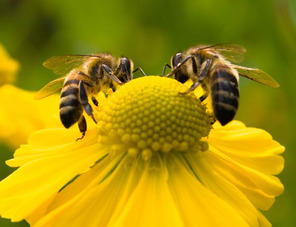
The pollinator’s agent like the bees and other pollinating insects is largely at risk in the effects of climate change. Bees pollinates more than 1 billion euro worth of crops in the UK each year including fruits and vegetables.
The changes in their habitat and the abnormal behavior of the different species of bees is a result of warmer weather faces an increasing risk of extinction. The mismatch in timing of the flower and bees in responding to their mutual relationship and their natural cycle to reproduce can as well cause their extinction.
Wild bees, which are particularly important for crop pollination and improving the flavor and quality of fruits like apples may be more vulnerable to the impacts of climate change than honey bees, according to experts. Bumblebees are also thought to be particularly vulnerable.
The extinction of these pollinating insects may lead to the inability of man to produce food, without these insects blossom is a pointless exercise with no harvest.
The food security of the world is at stake especially on vegetation, but these very little creature once gone will leave a big impact on our planet. Remember that almost all of our resources such as the meat products depends on other plants and organism that fed on other plants. There will be unequal balance in nature and the worst is yet to come.
To date a neglected aspect of the climate change debate, much less researches has been conducted on the impacts of climate change on health, food, supply, economic growth, migration, security, water, coastal, biodiversity, agriculture and fisheries and our environment.
The majority of the adverse effects of climate change are experienced by poor and low income communities in the developing countries. A report on the global human impact of climate change published by the Global Humanitarian Forum in 2009, estimated more than 300,000 deaths and about $125 billion in economic losses each year, and indicating that most climate change induced mortality is due to worsening floods and droughts in developing countries.
A wide range of health risk and health problems such as malnutrition, diarrheal diseases, infectious diseases, cardio vascular diseases, malaria, cholera, water borne diseases and insect/animal transmitted diseases among others.
The changes in their habitat and the abnormal behavior of the different species of bees is a result of warmer weather faces an increasing risk of extinction. The mismatch in timing of the flower and bees in responding to their mutual relationship and their natural cycle to reproduce can as well cause their extinction.
Wild bees, which are particularly important for crop pollination and improving the flavor and quality of fruits like apples may be more vulnerable to the impacts of climate change than honey bees, according to experts. Bumblebees are also thought to be particularly vulnerable.
The extinction of these pollinating insects may lead to the inability of man to produce food, without these insects blossom is a pointless exercise with no harvest.
The food security of the world is at stake especially on vegetation, but these very little creature once gone will leave a big impact on our planet. Remember that almost all of our resources such as the meat products depends on other plants and organism that fed on other plants. There will be unequal balance in nature and the worst is yet to come.
To date a neglected aspect of the climate change debate, much less researches has been conducted on the impacts of climate change on health, food, supply, economic growth, migration, security, water, coastal, biodiversity, agriculture and fisheries and our environment.
The majority of the adverse effects of climate change are experienced by poor and low income communities in the developing countries. A report on the global human impact of climate change published by the Global Humanitarian Forum in 2009, estimated more than 300,000 deaths and about $125 billion in economic losses each year, and indicating that most climate change induced mortality is due to worsening floods and droughts in developing countries.
A wide range of health risk and health problems such as malnutrition, diarrheal diseases, infectious diseases, cardio vascular diseases, malaria, cholera, water borne diseases and insect/animal transmitted diseases among others.
The Call for Justice and the Solution
Climate Change and Global Warming is not a hoax!. It is a global problem that must be addressed properly to all the people residing this planet. This is not a simple problem that simply needs a lot of funds and donations-this is all about actions, proper planning and self-discipline. Admit it, combating global warming is so hard, it takes at least millions of years to heal the planet by its own. The planet must undergo to its natural process, the “nature’s way” of soothing the pains and injuries brought by man’s activities.
It is still a long fight for some to become knowledgeable in this global call for justice. Others takes this for granted, others don’t even know what climate change is and what is global warming is, or even their differences.
The richest countries who have made a lot of contribution in this “global case” keeps on emitting greenhouse gas pollutions and other toxins from their factories and establishments that have made a lot of attribution.
Climate Change and Global Warming is not a hoax!. It is a global problem that must be addressed properly to all the people residing this planet. This is not a simple problem that simply needs a lot of funds and donations-this is all about actions, proper planning and self-discipline. Admit it, combating global warming is so hard, it takes at least millions of years to heal the planet by its own. The planet must undergo to its natural process, the “nature’s way” of soothing the pains and injuries brought by man’s activities.
It is still a long fight for some to become knowledgeable in this global call for justice. Others takes this for granted, others don’t even know what climate change is and what is global warming is, or even their differences.
The richest countries who have made a lot of contribution in this “global case” keeps on emitting greenhouse gas pollutions and other toxins from their factories and establishments that have made a lot of attribution.
This year, a large scale activist event to advocate a global action against climate change was launched. The People’s Climate March that took place last September 21, 2014 in New York with over 400, 000 participants, it was the largest climate march in history.
The march was described as “an invitation to change everything,” the march was called in May 2014 by 350.org, which was founded by writer/activist Bill McKibben and was endorsed by over 325 organizations, including many international and national unions, churches, schools, community and environmental justice organizations. It was conceived as a response to the scheduled U.N. Climate Summit of world leaders to take place in New York City two days later, on September 23.
The world is in our hands today, we humans are the highest form of creation that inhabits the planet. We have the intelligence and the capacity to rotate the world and start a new world that would care for all the living creature residing the world.
The global warming and climate change are just a product of the greediness of some of the richest man and country in the world. But those wealth are just a piece of trash if these planet would completely be destroyed and vanished. There is no such Planet B that awaits for us in the future nor there no evacuation place in the universe that could accommodate all the Earthly being.
It is never too late for us to change our attitudes and beliefs, let us start it on our own. Let us start living “green” at home. Let us not waste more fossil-fuels and invest on renewable energy. Let us start a green technology revolution that would create inventions and studies on saving and caring the planet. That is only the way to win the court battle in this global crime and achieve the global justice for our one and only Mother Earth.
The march was described as “an invitation to change everything,” the march was called in May 2014 by 350.org, which was founded by writer/activist Bill McKibben and was endorsed by over 325 organizations, including many international and national unions, churches, schools, community and environmental justice organizations. It was conceived as a response to the scheduled U.N. Climate Summit of world leaders to take place in New York City two days later, on September 23.
The world is in our hands today, we humans are the highest form of creation that inhabits the planet. We have the intelligence and the capacity to rotate the world and start a new world that would care for all the living creature residing the world.
The global warming and climate change are just a product of the greediness of some of the richest man and country in the world. But those wealth are just a piece of trash if these planet would completely be destroyed and vanished. There is no such Planet B that awaits for us in the future nor there no evacuation place in the universe that could accommodate all the Earthly being.
It is never too late for us to change our attitudes and beliefs, let us start it on our own. Let us start living “green” at home. Let us not waste more fossil-fuels and invest on renewable energy. Let us start a green technology revolution that would create inventions and studies on saving and caring the planet. That is only the way to win the court battle in this global crime and achieve the global justice for our one and only Mother Earth.
Sources:
http://www.telegraph.co.uk/earth/earthnews/10730667/Bees-and-the-crops-they-pollinate-are-at-risk-from-climate-change-IPCC-report-to-warn.html
http://phys.org/news/2014-05-effects-climate-ecological-role-bees.html#jCp
www.bbc.com/.../science-environment-29301969
http://news.yahoo.com/york-gears-historic-climate-march-155128809.html
http://edition.cnn.com/2014/09/21/opinion/sutter-peoples-climate-march/
http://www.washingtontimes.com/news/2014/sep/22/400k-rally-climate-change-new-york-city-streets/#ixzz3EyOSNarZ
http://en.wikipedia.org/wiki/Climate_change
http://wwf.panda.org/about_our_earth/aboutcc/problems/rising_temperatures/
http://ocean.nationalgeographic.com/ocean/critical-issues-sea-level-rise/
http://www.ipcc.ch/publications_and_data/ar4/wg1/en/faq-5-1.html
http://en.wikipedia.org/wiki/Effects_of_climate_change_on_humans
http://www.telegraph.co.uk/earth/earthnews/10730667/Bees-and-the-crops-they-pollinate-are-at-risk-from-climate-change-IPCC-report-to-warn.html
http://phys.org/news/2014-05-effects-climate-ecological-role-bees.html#jCp
www.bbc.com/.../science-environment-29301969
http://news.yahoo.com/york-gears-historic-climate-march-155128809.html
http://edition.cnn.com/2014/09/21/opinion/sutter-peoples-climate-march/
http://www.washingtontimes.com/news/2014/sep/22/400k-rally-climate-change-new-york-city-streets/#ixzz3EyOSNarZ
http://en.wikipedia.org/wiki/Climate_change
http://wwf.panda.org/about_our_earth/aboutcc/problems/rising_temperatures/
http://ocean.nationalgeographic.com/ocean/critical-issues-sea-level-rise/
http://www.ipcc.ch/publications_and_data/ar4/wg1/en/faq-5-1.html
http://en.wikipedia.org/wiki/Effects_of_climate_change_on_humans

